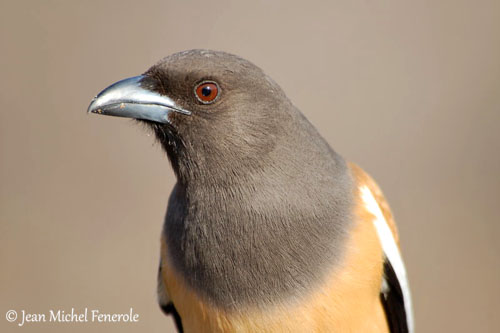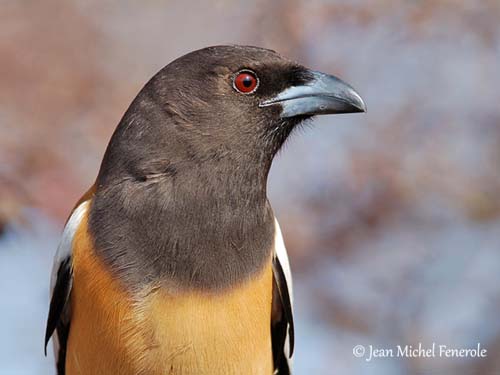
Fr: Témia vagabonde
All : Wanderbaumelster
Esp : Urraca Vagabunda
Ital: Gazza vagabonda
Nd: Rosse Boomekster
Sd: Indisk trädskata
Photographers:
John Anderson
John Anderson Photo Galleries
Jean Michel Fenerole
Photos d’Oiseaux du monde
Ingo Waschkies
Bird Photography
Text by Nicole Bouglouan
Sources:
HANDBOOK OF THE BIRDS OF THE WORLD Vol 14 by Josep del Hoyo-Andrew Elliot-David Christie - Lynx Edicions – ISBN: 9788496553507
A Field Guide to the Birds of South-East Asia by Craig Robson. New Holland Publishers. ISBN: 9781780090498
A photographic guide to Birds of Vietnam, Cambodia and Laos by Peter Davidson. New Holland Publishers. ISBN: 9781847731418
BirdLife International (BirdLife International
Wikipedia, the free encyclopaedia
Rufous Treepie
Dendrocitta vagabunda
Passeriforme Order – Corvidae Family
BIOMETRICS:
Length: 46-50 cm including the tail of up to 30 cm
Weight: 90-130 g
DESCRIPTION:
This noisy bird is found across India. It is an arboreal species, often feeding in treetops with great agility.
The adult of nominate race has sooty blackish head, breast and upper mantle, with darker face and throat. The upperparts are rufescent-brown turning orange-buff on uppertail-coverts. On the upperwing, secondary wing-coverts and tertials are silvery-grey, contrasting with the black rest of wing. The long graduated tail is pale grey with wide terminal band.
On the underparts, the lower parts are deep buff-rufous, turning orange-buff on undertail-coverts.
The bill is blackish-grey. The eyes are deep red to reddish-brown. Legs and feet are dark grey.

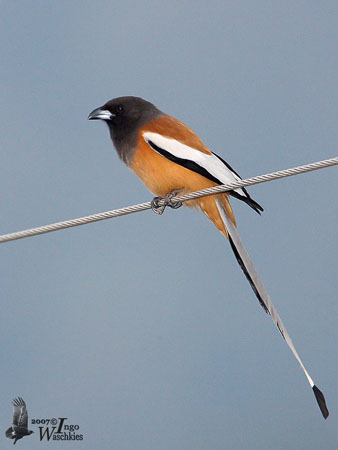
Both sexes are similar.
The juvenile is duller with brown hood and mantle, whitish-buff rump, uppertail-coverts and underparts. The wings are brown instead black, and the pale grey wing panel is tinged creamy-buff. The outer rectrices show narrow pale buff tips.
There are nine subspecies which differ in size and colour tones.
VOICE: SOUNDS BY XENO-CANTO
The Rufous Treepie gives loud, metallic, flute-like “koku-lii” or “ko-ki-la”. This advertising call is very familiar in India. The pairs utter loud “kuki-uii-akuak” and also “ekhekhekh” calls.
Alarm calls are harsh “herh-herh-herh-herh hah-hah-hah herh-herh-herh…”
These birds have wide repertoire of harsh calls, squawks and musical notes.
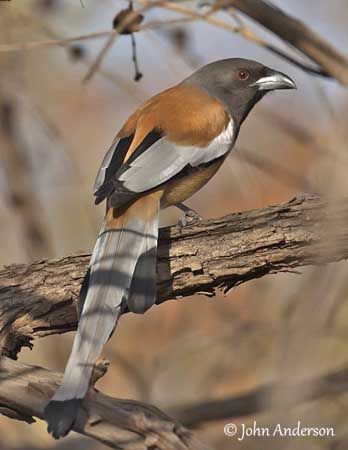
HABITAT:
The Rufous Treepie frequents all types of open deciduous woodlands, dry forest, mixed deciduous forest, secondary growth and sometimes cultivated areas with scattered trees. It can be seen in urban parks and large gardens.
This species is visible mainly in lowlands, and usually below 1000 metres, but according to the range, it can be found up to 2100 metres of elevation.
RANGE:
The Rufous Treepie is found in Indian Subcontinent and adjacent parts of SE Asia. This species is resident in Pakistan and Indian Subcontinent, except on islands.
In SE Asia, it is locally common resident in Myanmar, Thailand, Cambodia, Laos, S Annam and Cochinchina.
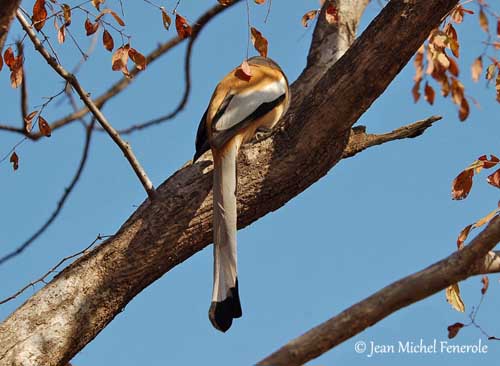
BEHAVIOUR:
The Rufous Treepie is omnivorous like most Corvidae species. It feeds primarily on large variety of insects and their larvae, spiders, snails and small vertebrates such as young birds, small birds, rodents, bats, snakes, frogs and lizards. It may kill small birds.
This species scavenges near villages for food waste. It feeds on carrion too. But it also consumes plant matter such as wild figs from Ficus, and a variety of other fruits from several plant species, and cultivated fruits in orchards. Nectar is also taken at flowering trees.
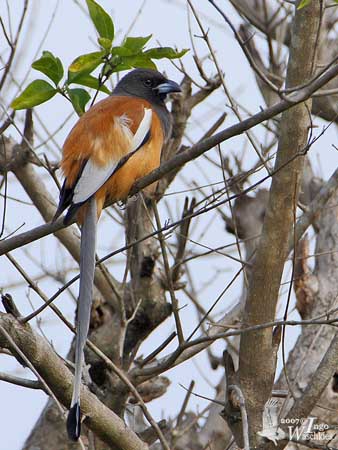
The Rufous Treepie is opportunistic and may take food from the hand at picnic areas. They usually occur in pairs or in small family groups. However, they may gather in great numbers at abundant food sources.
It takes advantage of disturbed insects from tree trunks or leaf litter by other bird species such as drongos and woodpeckers. It follows domestic cattle and wild large mammals to feed on ectoparasites and all invertebrates flushed by the large animals.
The Rufous Treepie feeds on the ground where it performs short hops with raised tail. But when feeding in trees, it is very agile. It clings and clambers among branches while searching for food.
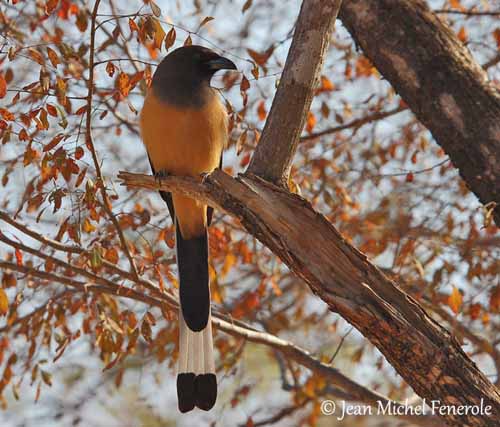
FLIGHT:
The Rufous Treepie has distinctive dipping flight during which each dip ends in upwards jerk.
REPRODUCTION:
The breeding season varies according to the range, but mainly to the rains.
The Rufous Treepie breeds solitary. Both adults build the nest, a rather small and flimsy cup made with thin thorny twigs. The inner cup is lined with rootlets and small twigs. It is placed at about 6-8 metres above the ground in isolated or prominent tree or in bush.
The female lays 2-6 pale greenish eggs with darker markings. Both sexes share the incubation and all the nesting duties. The young are fed by both parents.
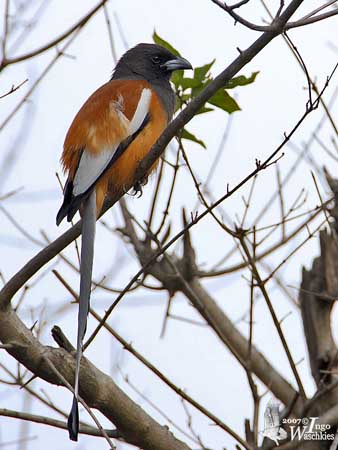
DIET:
The Rufous Treepie is omnivorous and feeds on numerous insects and their larvae such as Orthoptera, Coleoptera, Lepidoptera, Hymenoptera and Isoptera. It also takes spiders, snails and small vertebrates such as small birds, rodents, bats, snakes, frogs and lizards.
Plant matter such as fruits and nectar are consumed, and carrion too.
PROTECTION / THREATS / STATUS:
The Rufous Treepie is usually common and widespread in its range except in Vietnam where it is more local and uncommon.
Thanks to the large quantity of insects that it consumes, it is not considered a pest in spite of some damage caused to orchards and cereal crops.
The species is not currently threatened.
